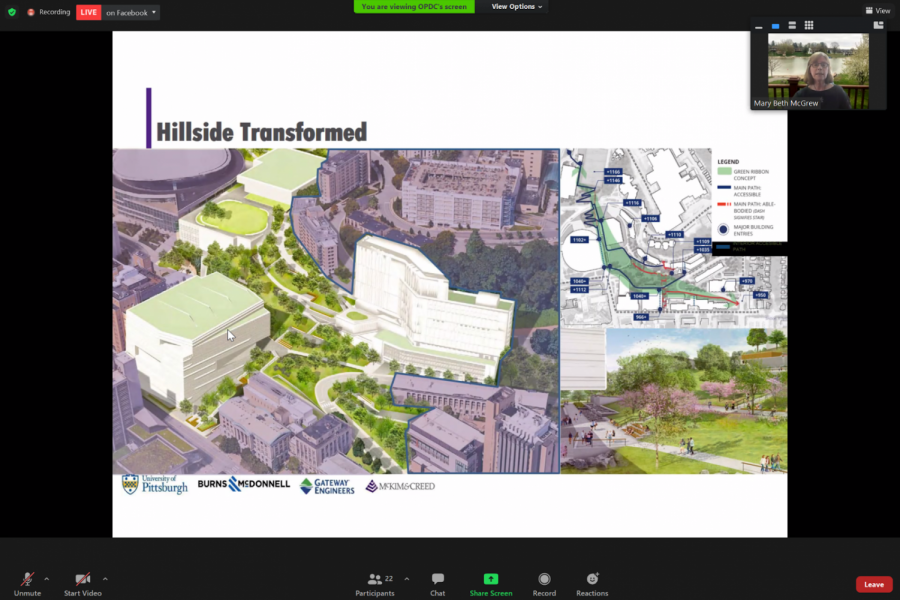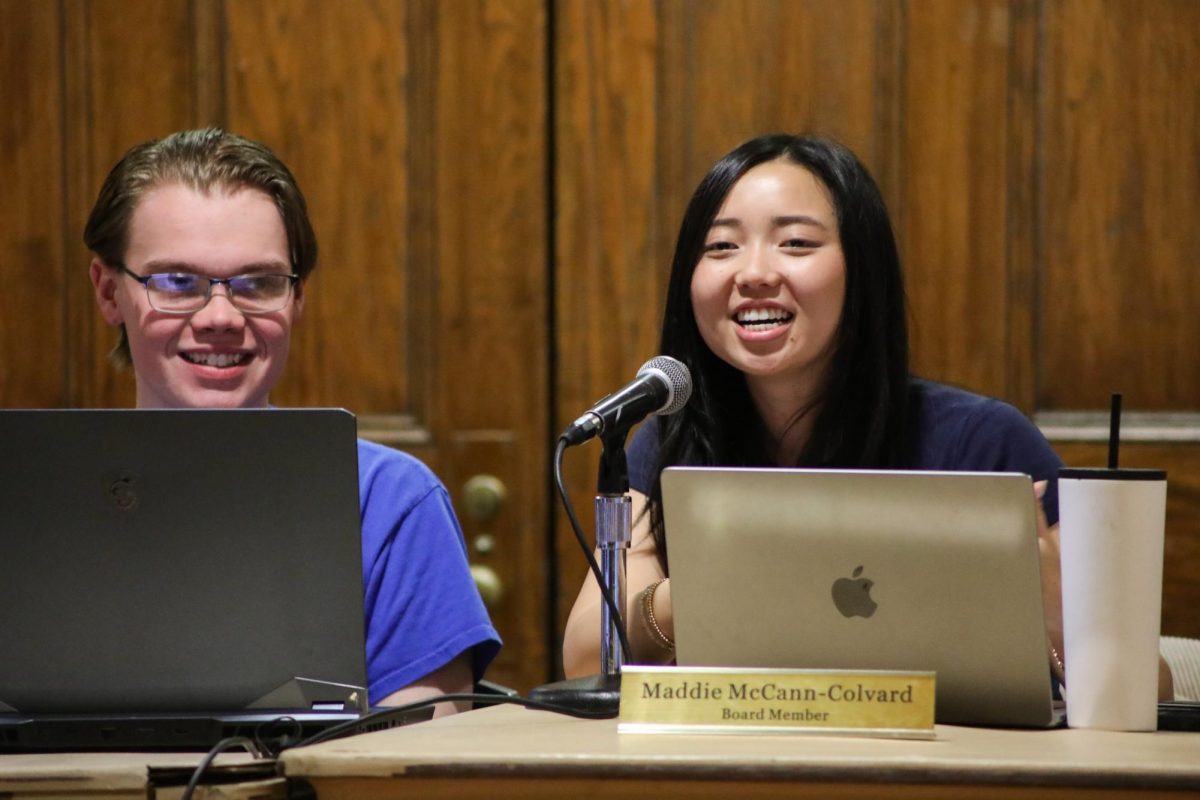OPDC discusses water bill discounts, stormwater management, Forbes Ave. building demolition
The Oakland Planning and Development Corp. met Tuesday night to discuss various restructuring plans on and around campus, as well as broader community opportunities.
May 26, 2021
The Oakland Planning and Development Corp. held a public meeting Tuesday night to discuss neighborhood developments, which include a proposal to build a 210,000 gallon underground tank to collect stormwater.
In addition to the water collection tank, the meeting included two presentations from Pitt about restructuring Pitt’s upper campus to increase sustainability and collect stormwater, as well as a building demolition on Forbes Avenue. The Pittsburgh Water and Sewer Authority presented their water bill discount programs.
OPDC announced various community opportunities, such as open applications to the Urban Redevelopment Authority’s homeowner assistance program, OPDC’s Day of Giving on June 29, bi-weekly food drives and Clutter for a Cause on June 1.
Sarah Viszneki from PWSA presented customer assistance programs to help community members pay for their water bills. People who are at or below the 150% of the federal poverty level are eligible for the PWSA discounts.
The discounts include a 100% discount of fixed rate charges per month — previously 50%, and then 75% — and a “Discount Bill +” program, which deducts an extra 20% per 1,000 gallon charge. The “Discount Bill +” program is available to customers at or under the 50% federal poverty line. The PWSA also has a “Clean Water Assistance Fund,” which allows customers to receive $35 every three months to cover the sewage treatment portion of their water bill.
According to Viszneki, PWSA adjusted their requirements for a $300 per year hardship grant so customers can apply every year for the grant and do not need to make a “sincere effort of payments” or put in a termination notice. Viszneki said customers should call PWSA to see if and how they can set up a payment arrangement.
“Now, because of the pandemic, everybody does have at least one more shot to get a payment arrangement, so if people have been denied in the past, they don’t think they’re going to be able to get it,” Viszneki said. “Please give us a call and see what we can do to get you on a payment arrangement to get people on track so that we can get those past due balances down.”
Mary Beth McGrew, assistant vice chancellor of planning, design and real estate at Pitt, presented a stormwater management plan for the University, which includes restructuring the “hillside,” or Pitt’s upper campus, and constructing an underground water tank. McGrew said the plan includes making more usable outdoor spaces, while also increasing campus sustainability.
“Our desire is to make a human engaged landscape so places where people can do some things outdoors, not necessarily all manicured, but places that you can enjoy the landscape to expand the usable outdoor space to get enhanced sustainability,” McGrew said.
According to McGrew, planting more trees, creating green roofs, rain gardens and pervious pavers — such as the pavement at the renovated William Pitt Union quad — will allow Pitt to collect stormwater for reuse. McGrew said there are multiple ways to collect water, such as planting trees and gardens, or having tanks to catch water.
“As buildings are approved for construction, those ones on the Hill would have a tank, so that there are multiple ways to collect water,” McGrew said. “So there’s the soft, the green things that we talked about on the hillside and making it a little more permeable, but then these are the more engineered systems where the smaller tanks could hold the water and then feed the larger tank in preparation for the reuse.”
McGrew also said redirecting approximately four million gallons of water a year to an underground tank, instead of nearby Four Mile Run, will reduce stress on the water systems and can reduce flooding. The concrete tank, which could hold up to 210,000 gallons of water, would then allow water to be reused or slowly released into the ground.
Besides sustainability, McGrew said the new stormwater management system could provide educational and research opportunities to students, allowing them to study water movement, water quality and soil types.
“We could have opportunities on the way down the hill for research and learning and education to look at how the storm water’s moving, what the quality of the water is, what the soil types are,” McGrew said.
While the water tank location is still being finalized, McGrew said they are halfway through design drawings, and received good comments and positive responses from the PWSA.
McGrew, alongside Melissa McSwigan, director emeritus of Preservation Pittsburgh, also presented the reconstruction of the Croatian Fraternal Union building on 3441-3443 Forbes Ave. McGrew said everytime it snows, the building seems to shift, causing concerns in the community.
McGrew also said there were arguments about the historical significance of the building, as the building represented the Croatian community and architecture at the time.
“We started talking about the facade, and what it represents for the history of Pittsburgh,” McGrew said. “Nonetheless, though, you get a sense of what clay tile facades looked like in that era, and that this represented groups of people that were part of a significant part of the history of settling Pittsburgh.”
McGrew said the front or facade of the building would be taken and stored in a climate controlled facility while the rest of the building is demolished and rebuilt. McGrew said after reconstruction, the facade would be placed on the new building, so it still “captures your attention.”
“I’d like to keep the new building, less dominant than the facade so that the facade captures your attention, and have it finished enough to have to spike your curiosity as to why something that was clearly built in another era is being preserved today and we might have that conversation through posters and photographs in this outdoor space,” McGrew said.
McSwigan said because the building was built in the 1920s, it is important to share the building and occupants’ history with the Pittsburgh community.
“I think there’s significant interest in the building, and it did tell a great story of a vital organization that still is in existence today,” McSwigan said. “So I think there are some nice ways, when we get to that stage, to get the story out there a little bit more than there has been, up until now.”



